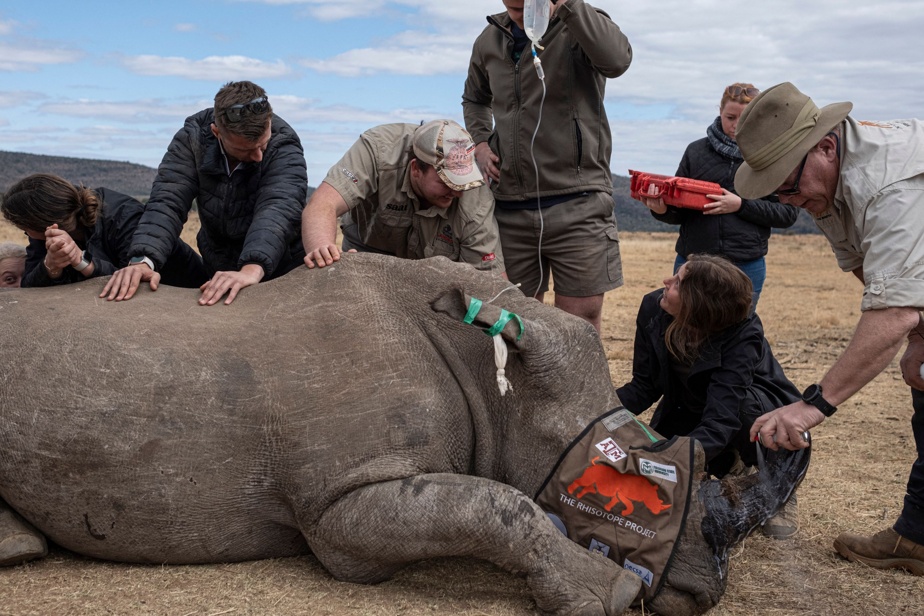(Mokopane) South African scientists this week began injecting radioactive materials into the horns of live rhinos to make them useless and more detectable at borders, and to deter poaching that is decimating these protected animals.
South Africa is home to almost 80% of the world’s white rhino population, estimated at fewer than 13,000 individuals. But the country has become a hotspot for poaching, driven by demand from Asia where keratin horns are used in traditional medicine for their alleged therapeutic or aphrodisiac effects.
At the Rhino Orphanage, which mainly houses young deprived of their poached mothers, in an undisclosed location in the Limpopo province (north-east), some thick-skinned herbivores graze in the savannah.
James Larkin, a researcher at the University of the Witwatersrand who initiated the initiative, placed “two tiny little radioactive chips in the horn” of one of these beautiful babies, who at the age of one , are already approaching half a ton.
The radioactive materials “render the horn useless and essentially toxic for human consumption,” says Nithaya Chetty, dean of science at the same university.
The dusty rhino, asleep and crouching on the ground, felt no pain, Larkin said. Adding that the dose of radioactive material is so low that it will have no impact on the health of the animal or on the environment.
In February, the government said that despite its efforts, 499 rhinos had been killed in 2023, most of them in national parks. An increase of 11% compared to the previous year.
Twenty specimens are participating in the Rhisotope pilot project and will receive a dose “strong enough to trigger the detectors installed throughout the world” initially “to prevent nuclear terrorism”, explains to AFP Mr. Larkin, visibly delighted, wearing a khaki hat and shirt. .
Radical solution
Border agents often have hand-held radiation detectors, in addition to the thousands of detectors installed at ports and airports, scientists say.
On the black market, the price of horns, by weight, rivals that of gold or cocaine.
According to Arrie Van Deventer, the founder of the orphanage, the dehorning of rhinos, which is widely practiced in the country, and their poisoning, have failed to deter poachers.
“This might be what will put an end to poaching,” enthuses the tall, tall nature conservationist, “it’s the best idea I’ve ever heard.”
Wildebeest, warthogs and giraffes roam the vast conservation area while the team carry out the delicate process on another rhino.
James Larkin meticulously drills a small hole in the horn, inserts the radioisotope and finishes by spraying 11,000 microdots all over the horn.
The last phase of the project will consist of treating the animal following “an appropriate scientific and ethical protocol,” explains project manager Jessica Babich.
The team will then take blood samples to ensure the animals are protected.
The material will remain on each treated horn for five years, which is less expensive than dehorning every 18 months, Larkin said.
